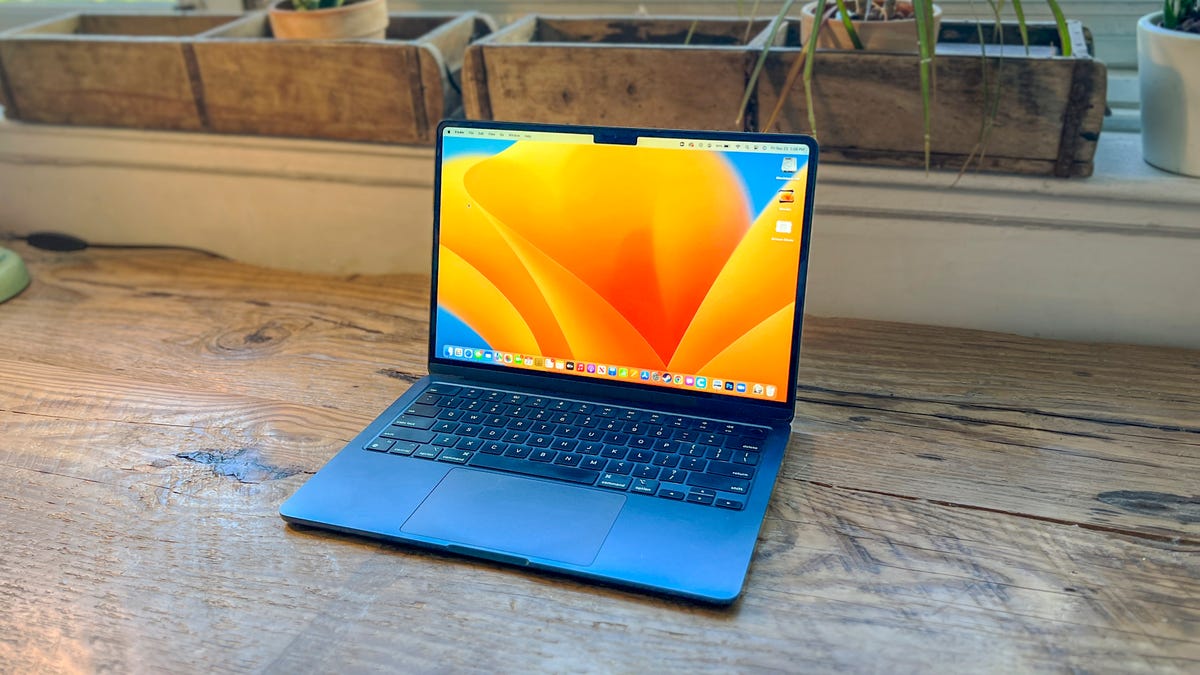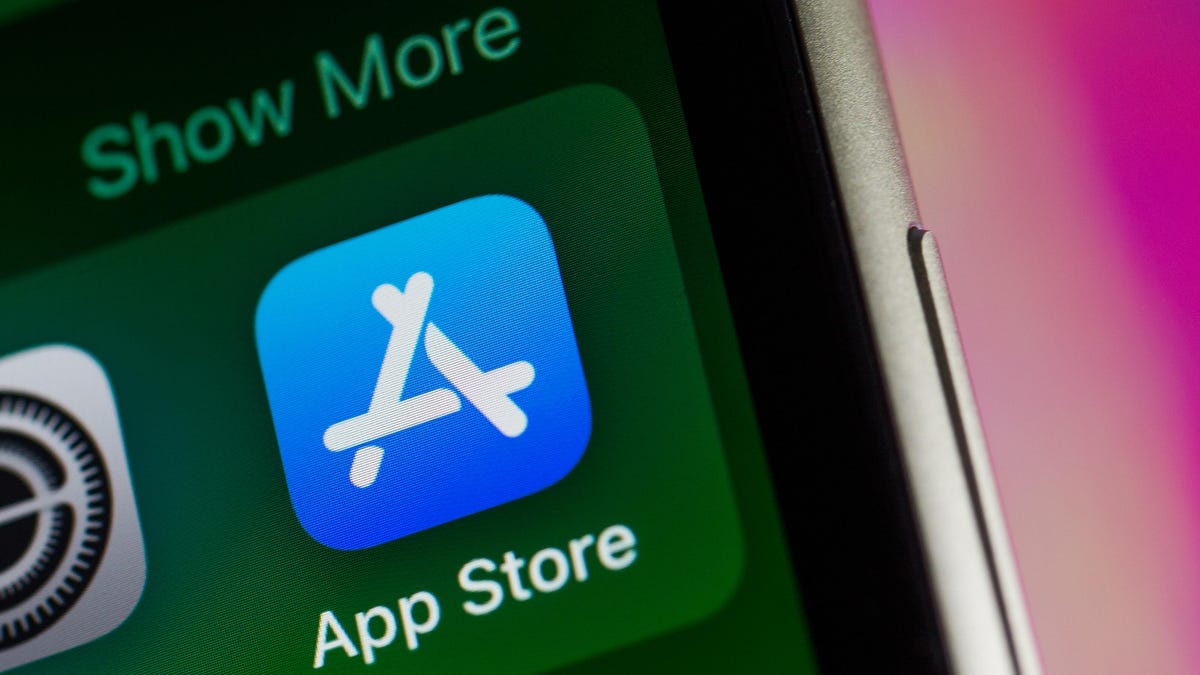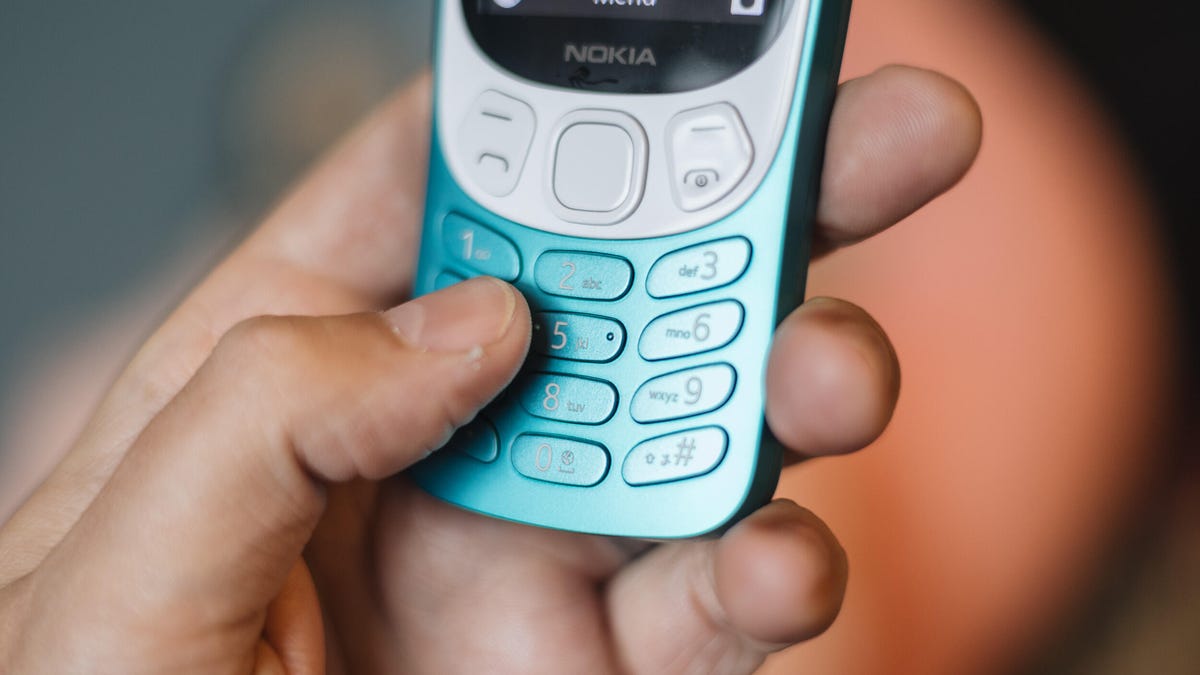Technologies
You Need to Try These 17 Essential MacBook Settings Right Now
Customize your MacBook by following these tips during or after setup.

This story is part of 12 Days of Tips, helping you make the most of your tech, home and health during the holiday season.
With the new year just around the corner, it’s a great time to clean up your MacBook and get it running at its best. Or maybe you’ve got a pristine new MacBook and want to explore all it has to offer. Either way, no laptop comes straight out of the box optimized for maximum performance — even one with an Apple logo.
No matter if you have a new MacBook like the M2 MacBook Air or an M2 MacBook Pro, own an earlier M1 MacBook Air or Pro, or you have an older Intel-based MacBook, there are things you can do to improve the experience. A handful of tweaks, tips and fixes you should do on Day 1 or Day 101 that go beyond your default MacBook settings. I’ve put together some of my personal favorites here that will make your device easier to use.
So, after you’ve jumped through the initial screens from the Mac Setup Assistant that had you log in with your Apple ID, connect to a network and so on, consider changing these settings, or at least check them out, on your MacBook. This list is sure to grow, too, now that Apple’s latest desktop OS, MacOS Ventura, has arrived.
Read more: The Quickest Way to Transfer Your Files, Apps and More From Your Old MacBook
Check for updates
Has Apple released an update to MacOS since it built your MacBook? Find out by clicking the Apple button in the upper-left corner of your screen and then clicking About This Mac. You should be staring at the General tab of the About This Mac window. If so, click the Software Update button, which will launch the System Preferences to check for updates.
Optimize battery charging
If your MacBook is going to spend most of its time plugged in, you’ll definitely want to change this setting. MacOS can learn your charging habits to reduce battery aging. Click on the battery icon on the menu bar at the top of your display and select Battery Preferences from the drop-down menu. (If you don’t see a battery icon, go to System Preferences > Energy Saver and check the box for Show battery status in menu bar.) At the bottom of the list of options, select Optimized battery charging. This will slow down your charging once the battery hits 80%.
Read more: Best iPhone 14 Fast Chargers at the Lowest Prices We Can Find
Set up Siri
Siri should be enabled by default, but if you would prefer to use Siri only on your iPhone, then you can disable Siri by going to System Preferences > Siri and unchecking the box for Enable Ask Siri. If you plan on using Siri frequently, then you can use this Siri window to choose Siri’s voice, language and a keyboard shortcut.
Customize the Touch Bar
If you have one of the last remaining Intel-based MacBook Pro or 13-inch M2 MacBook Pro models with the Touch Bar, then head to System Preferences > Keyboard and click the Customize Touch Bar button and then simply drag the buttons you want to show up on the default view of the Touch Bar to the Touch Bar below the display. Don’t worry, they’ll make the leap from your display across the hinge and to the Touch Bar.
Sync folders via iCloud
I find it incredibly useful to sync the Desktop and Documents folders between my two Macs and my iOS devices. To sync these two folders, go to System Preferences > Apple ID and click iCloud in the left column and check the box next to iCloud Drive. Click Options next to iCloud Drive and select Desktop and Documents folders.
Choose default browser
Even though it uses more system resources than Safari, I use Chrome instead of Safari because the favicons help me keep track of all of my open tabs. To set a default browser, go to System Preferences > General and make a selection other than Safari for Default web browser.
Read more: Best MacBook Air M2 Charger: Which One Should I Get?
Set scrolling direction
A MacBook’s «natural» scrolling direction doesn’t feel natural to me. If you want the two-finger swipe gesture to scroll vertically in the opposite way, head to System Preferences > Trackpad and click on the Scroll & Zoom tab. Next, uncheck the box for Scroll direction: Natural.
Add and remove items from Dock
Apple throws a number of stock apps into the Dock at the bottom of the screen. You can make room for the apps you use most frequently by removing others you don’t need in the Dock. To remove an app from the Dock, simply click on its icon in the Dock and drag it to the desktop until you see Remove appear above the icon and then let go. Poof, it’s gone! To add an app to the Dock, open it and then right-click on its icon in the Dock and mouse over the Option line in the menu and click Keep in Dock.
Move the Dock
The Dock sits at the bottom of your screen, but on a widescreen MacBook display, you might find it better to have it on the side. To move the Dock, go to System Preferences > Dock & Menu Bar and choose either Left or Right for Position on Screen. While you’re there, you can also drag a slider to adjust the size of the Dock. You can also make it disappear from view when you aren’t using it by checking the box for Automatically hide and show the Dock.
Show battery percentage
Like an iPhone, a MacBook displays a small battery icon at the top of the display to show how much battery power remains. It’s more helpful if next to this icon the percentage of battery you have left is also displayed. To show the percentage, go to System Preferences > Dock & Menu Bar and choose Battery from the left column. Check the box next to Show Percentage and it should instantly appear next to the battery icon on the Menu Bar.
Stop auto-play videos
Safari now combats two of the bigger internet annoyances: autoplay videos and ad trackers. Ad tracking is stopped by default, but there is a global setting for stopping autoplay videos that you’ll want to enable. Open Safari’s Preferences and click on the Websites tab. Choose Auto-Play from the left panel and for When visiting other websites at the bottom of the window, select Never Auto-Play or Stop Media with Sound (if you are OK with muted videos playing) and sit back and rejoice in the silence.
Work the Night Shift
Staring at a blue-light screen before bed can shift your body’s natural clock and make it difficult to get a good night’s sleep. With Apple’s Night Shift feature, the colors of your display are shifted to the warmer end of the spectrum during the evening hours. Head to System Preferences > Displays and click the Night Shift tab. You can set Night Shift to come on from sunset to sunrise, or you can select a custom time period. Use the slider to adjust the color temperature of the effect between less warm and more. Once you start using Night Shift, you’ll wonder how you ever sat in front of a cold, blue screen in the evening hours.
Make your desktop dynamic
With MacOS Mojave, Apple introduced a dynamic wallpaper that slowly changes its lighting throughout the day, going from a bright, sunny desert scene during the day and transitioning to a cool, dark screen at night. You can find it by going to System Preferences > Desktop & Screen Saver. While Mojave started out with just two dynamic wallpapers — Mojave and Solar Gradients — there are now several to choose from and sites where you can download more.
Try out dark mode
MacOS Mojave also delivered an honest-to-goodness dark mode for Macs. Go to System Preferences > General and you’ll see the Light and Dark options at the top for Appearance. On most apps, dark mode turns the background black and text white. Want to use both Light and Dark options? Select Auto and buttons, menus and windows will change throughout the day.
Set hours for Do Not Disturb
Along with overly blue screens, notifications have no place in my home after a certain hour. As with iOS, MacOS lets you disable notifications in the evening so you aren’t disturbed while watching Netflix or sleeping. Go to System Preferences > Notifications and check the box Turn on Do Not Disturb. By default, it’s set for the hours of 10 p.m. to 7 a.m. but you can set your own Do Not Disturb Window. There are options to enable the feature when your MacBook’s display is sleeping or when you are mirroring the display to a TV or projector (and presumably watching a movie or show or video). You can also let calls come through (if you use your MacBook to answer calls) or just repeated calls, which might mean there is an emergency or something urgent to which you may need to respond.
Set app download tolerance level
If you want to download apps from the web at large and not just from the Mac App Store, you’ll need to tell MacOS to loosen up on the reins a bit. Go to System Preferences > Security & Privacy, click the General tab and then click the lock in the lower-left corner and enter your password to make changes. Next, for Allow apps downloaded from, choose App Store and identified developers.
More from 12 Days of Tips
- You Should Be Using These iPad Features
- Change These Settings to Make Your Apple Watch Work Even Better
- AirPods Tips And Tricks That Every Owner Should Know About
Choose how quickly your MacBook locks
While on the Security & Privacy page, you can set the length of time your MacBook can sit idle before the screen locks. It’s more convenient to set a longer time but also less secure. The time period to set here doesn’t start ticking until the screen saver begins, so you also need to set the length of time before your screen saver kicks in. Go to System Preferences > Desktop & Screen Saver and you can select the style of your screen saver and also the time by using the drop-down menu at the top of the window.
Technologies
Judge Blocks Texas App Store Age-Check Law
A preliminary injunction found the Texas law, set to begin Jan. 1, is «more likely than not unconstitutional.»

A new Texas state law set to take effect on Jan. 1 would have required app stores to implement age verification processes. But the law has been put on hold, at least temporarily, by a federal court judge.
As reported by the Texas Tribune, Senate Bill 2420, also known as the Texas App Store Accountability Act, is the subject of a temporary injunction issued by US District Judge Robert Pitman.
Pitman said in his decision that the law as written is broad, vague and «more likely than not unconstitutional.» However, he also wrote the court «recognizes the importance of ongoing efforts to better safeguard children when they are on their devices.»
Don’t miss any of our unbiased tech content and lab-based reviews. Add CNET as a preferred Google source.
The Texas law, signed into law by Governor Greg Abbott in May, requires app store operators — including Apple, Google, Nintendo, Steam and more — to build age verification processes for the storefronts and to only allow downloads to minors who obtain parental consent. The injunction is a ruling in an October lawsuit filed by the Computer & Communication Industry Association.
CCIA senior vice president Stephanie Joyce said in a statement, «This Order stops the Texas App Store Accountability Act from taking effect in order to preserve the First Amendment rights of app stores, app developers, parents, and younger internet users. It also protects parents’ inviolate right to use their own judgment in safeguarding their children online using the myriad tools our members provide.»
Other individuals and the advocacy group Students Engaged in Advancing Texas also filed suits over the law, the Texas Tribune reported.
App Store Accountability Act
The bill author, State Senator Angela Paxton, said the bill was meant to give parents «common sense tools to protect their kids and to survive court challenges by those who may have lesser priorities.»
The language of Texas Senate Bill 2420 does not only include mobile app stores from Apple or Google, but any «website, software application, or other electronic service that distributes software applications from the owner or developer of a software application to the user of a mobile device.»
By that definition, websites with links to browser games or mobile game consoles with download options would fall under the Texas law as written. The law also defines mobile devices as including phones and tablets, as well as any other handheld device capable of transmitting or storing information wirelessly.
The parental consent aspect of the law requires those under 18 to have an app store account affiliated with a parent or guardian to purchase or download applications.
Age verification elsewhere
In an effort to keep adult materials out of reach of minors and to protect children from potentially harmful content and interactions, tech companies have been compelled by law or through legal action to verify the age of users.
Roblox, which has a huge audience of minors, began rolling out stricter age verification after investigations and lawsuits hurt its reputation as a safe gaming space. Australia is perhaps the most large-scale example of a government restricting access to online content. In December, Australia began restricting social media access to those 16 and older. Reddit recently challenged that law.
In the US, age verification laws have primarily targeted adult sites. Texas already has a law on the books that requires adult sites to age-block their content. The Supreme Court upheld that law in a June ruling. The UK has also enacted age restriction rules for adult sites as have other US states.
Technologies
Today’s NYT Mini Crossword Answers for Thursday, Dec. 25
Here are the answers for The New York Times Mini Crossword for Dec. 25.

Looking for the most recent Mini Crossword answer? Click here for today’s Mini Crossword hints, as well as our daily answers and hints for The New York Times Wordle, Strands, Connections and Connections: Sports Edition puzzles.
Need some help with today’s Mini Crossword? Of course, there’s a very Christmassy clue involved. And once you solve the entire puzzle, look at the letters used in all the answers and see what they have in common. (5-Across will tell you!) Read on for all the answers. And if you could use some hints and guidance for daily solving, check out our Mini Crossword tips.
If you’re looking for today’s Wordle, Connections, Connections: Sports Edition and Strands answers, you can visit CNET’s NYT puzzle hints page.
Read more: Tips and Tricks for Solving The New York Times Mini Crossword
Let’s get to those Mini Crossword clues and answers.
Mini across clues and answers
1A clue: ___ King Cole, singer with the album «The Magic of Christmas»
Answer: NAT
4A clue: Body drawings, informally
Answer: TATS
5A clue: Letters to ___ (what this Mini was made with)
Answer: SANTA
6A clue: Huge fan, in slang
Answer: STAN
7A clue: «Illmatic» rapper
Answer: NAS
Mini down clues and answers
1D clue: Grandmothers, by another name
Answer: NANAS
2D clue: Abbr. before a name on a memo
Answer: ATTN
3D clue: Org. with long lines around the holidays
Answer: TSA
4D clue: «See ya later!»
Answer: TATA
5D clue: Govt.-issued ID
Answer: SSN
Don’t miss any of our unbiased tech content and lab-based reviews. Add CNET as a preferred Google source.
Technologies
Don’t Let a Border Agent Ruin Your Holiday Trip. Travel With a Burner Phone
Yes, you should leave your main phone at home and take a cheap burner this winter.

Prepare for a whole new level of border-crossing anxiety this holiday season: the high-probability of a phone search. New figures from US Customs and Border Protection say agents aren’t just glancing at your lock screen anymore — they are aggressively ramping up device inspections, even for citizens coming home. We aren’t just talking about a quick scroll through your photos, either. Agents are increasingly using forensic tools to clone and analyze everything on your device.
The stats are genuinely alarming. In just a three-month window this year, nearly 15,000 devices were flagged for searches, with over a thousand subjected to deep-dive data copying. If you’re traveling with your primary phone, you are essentially carrying your entire digital existence into a legal gray zone where privacy is optional.
The smartest defensive play is remarkably low-tech: the burner phone. By traveling with a secondary, stripped-down device, you ensure your private data stays safe at home while you stay connected abroad. But privacy isn’t the only perk. Moving to a «dumb» phone is the ultimate digital detox, helping you escape the notification trap that usually ruins a vacation.
Even figures like Conan O’Brien have ditched the smartphone to cut through the noise. Whether you’re dodging invasive border searches or just trying to enjoy your trip without being glued to a screen, a burner might be the best travel investment you make this year.
Read more: Best Prepaid Phone of 2025
Although carriers have offered prepaid phones since the ’90s, «burner phones» or «burners» became popular in the 2000s following the celebrated HBO series The Wire, where they helped characters avoid getting caught by the police. Although often portrayed in that light, burners aren’t only used by criminals; they’re also used anyone concerned with surveillance or privacy infringement.
What is a burner phone, and how does it work? Here’s everything you need to know about burners and how to get one.
Don’t miss any of our unbiased tech content and lab-based reviews. Add CNET as a preferred Google source.
What is a burner phone?
A burner phone is a cheap prepaid phone with no commitments. It comes with a set number of prepaid call minutes, text messages or data, and it’s designed to be disposed of after use.
Burner phones are typically used when you need a phone quickly, without intentions of long-term use. They’re contract-free, and you can grab them off the counter. They’re called burner phones because you can «burn» them (trash them) after use, and the phone can’t be traced back to you, which makes them appealing to criminals. Of course, those committed to illicit activities often do more than just throw these phones in the trash, and often completely obliterate the SIM cards and other materials by smashing them with a hammer or melting them away.
Burners are different from getting a regular, contract-bound cellphone plan that requires your information to be on file.
Why should you use a burner phone?
Burner phones are an easy way to avoid cellphone contracts or spam that you get on your primary phone number. Burners aren’t linked to your identity, so you can avoid being tracked down or contacted.
You don’t have to dispose of a burner phone after use. You can add more minutes and continue using it. Burner phones can still function as regular phones, minus the hassle of a contract.
You can also get a burner phone as a secondary phone for a specific purpose, like having a spare phone number for two-factor authentication texts, for business or to avoid roaming charges while traveling. Burner phones are often used by anyone concerned with privacy.
Read more: The Data Privacy Tips Digital Security Experts Wish You Knew
Burner phones, prepaid phones, smartphones and burner SIMs: What’s the difference?
Burner phones are cheap phones with simple designs that lack the bells and whistles of a smartphone. Because they’re designed to be disposable, you only get the essentials, as seen by the most common version, the flip phone.
All burner phones are prepaid phones, but not all prepaid phones are burners. What sets a burner apart is that you won’t have to give away any personal information to get one, and it won’t be traceable back to you. Again, a burner phone is cheap enough to be destroyed after use.
Prepaid smartphones are generally low-end models. You can use any unlocked smartphone with prepaid SIM cards, essentially making it a prepaid phone.
If you want a burner, you don’t necessarily have to buy a new phone. You can get a burner SIM and use it with an existing phone. Burner SIMs are prepaid SIMs you can get without a contract or giving away personal information.
Where can you buy a burner phone?
Burner phones are available at all major retail outlets, including Best Buy, Target and Walmart. They’re also often available at convenience stores like 7-Eleven, local supermarkets, gas stations and retail phone outlets like Cricket and Metro.
You can get a burner phone with cash, and it should cost between $10 and $50, although it may cost more if you get more minutes and data. If you’re getting a burner phone specifically to avoid having the phone traced back to you, it makes sense to pay with cash instead of a credit card.
If you just want a prepaid secondary phone, you can use a credit card. Just keep in mind that credit cards leave a trail that leads back to you.
There are also many apps that let you get secondary phone numbers, including Google Fi and the Burner app. However, these aren’t burners necessarily because the providers typically have at least some of your personal information. Additionally, apps like Google Talk require a phone number that’s already in use for you to choose a number with the service.
If you’re just looking to get a solid prepaid phone without anonymity, check out our full guide for the best prepaid phone plans available. We also have a guide for the best cheap phone plans.
-

 Technologies3 года ago
Technologies3 года agoTech Companies Need to Be Held Accountable for Security, Experts Say
-

 Technologies3 года ago
Technologies3 года agoBest Handheld Game Console in 2023
-

 Technologies3 года ago
Technologies3 года agoTighten Up Your VR Game With the Best Head Straps for Quest 2
-

 Technologies4 года ago
Technologies4 года agoBlack Friday 2021: The best deals on TVs, headphones, kitchenware, and more
-

 Technologies4 года ago
Technologies4 года agoVerum, Wickr and Threema: next generation secured messengers
-

 Technologies4 года ago
Technologies4 года agoGoogle to require vaccinations as Silicon Valley rethinks return-to-office policies
-

 Technologies4 года ago
Technologies4 года agoOlivia Harlan Dekker for Verum Messenger
-

 Technologies4 года ago
Technologies4 года agoiPhone 13 event: How to watch Apple’s big announcement tomorrow
